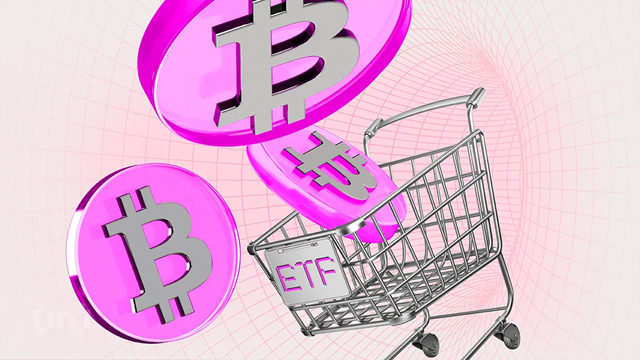BlackRock's IBIT Leads $400M Bitcoin ETF Inflows in Day as BTC Tests $109K

The Bitcoin market kicked off the new week with a surge in both price and institutional inflows. On June 16, BTC climbed to $108,952109,952, its intraday high, leading to a $400 million inflow into US spot Bitcoin ETFs. BlackRock's iShares Bitcoin Trust (IBIT), the largest ETF in the market, once again accounted for more than 65% of total net inflows, indicating that long-term institutional demand remains strong despite the defensive derivatives movement.
ETF Inflows Hit Strongest Since the Beginning of the Month
According to data from SosoValue, Bitcoin spot ETFs listed on the NYSE and Nasdaq recorded a total net inflow of $408.59 million in the first session of the week, the highest figure since June 10. Notable:
ETF Funds 16/6 Flows (USD) Cumulative Net Flows (USD)
IBIT (BlackRock) +267.3M ≈50.03B
FBTC (Fidelity) +89.1M ≈14.4B
BITB (Bitwise) +37.0M ≈3.5B
ARKB (Ark 21Shares) +8.4M ≈3.0B
GBTC (Grayscale) –3.4M –17.4B
Continuous net flows reinforce IBIT’s position as the most popular institutional Bitcoin investment vehicle, while also affirming the “liquidity hub” narrative that large asset managers are pursuing: turning BTC into a defensive component of their portfolios, rather than a purely speculative asset.
Derivatives: Rising defensive signals
In contrast to the ETF picture, the futures and options markets reflect cautious sentiment:
The BTC perp funding rate on most major exchanges has slipped to 0.0007%, near negative territory. This is the payout for short positions to longs, indicating that leveraged traders are leaning towards a short-term correction.
Open interest in Deribit put options has increased again, especially in late June and July, implying that downside risk protection is growing.
Prolonged negative funding could spur short-covering or trigger short squeezes, but it also exposes downside risk when the spot market lacks immediate demand.
Why are derivatives defensive when prices are rising?
Spot liquidity is thin: Spot volumes have not fully recovered after last week's geopolitical correction; ETFs attract money but only match orders at the end of the day, not injecting instant liquidity to the floor.
Inflation fluctuations and Fed moves: US CPI cooled down in May, helping the market bet that the Fed will lower interest rates in the fourth quarter, but there is no certain signal; this encourages traders to take profits or hedge price risks.
Major events at the end of the quarter: Futures and options contracts expire on June 28, which may cause unusual fluctuations; desks hedge risks in advance.
Short-term outlook
$109,000: The first psychological resistance coincides with the price channel border from the beginning of the month. If ETF capital flows maintain >$300 million/day, the price may test $113,000 (mid-May peak).
Nearby support: $104,000 (old peak in April) and the 50-day MA zone around $102,000. Deep negative funding combined with high OI can trigger a “short squeeze”, pushing the price to bounce back to the upper limit.
Key variables: daily ETF inflow data, US bond yield fluctuations, USDT.Dominance ratio, three indicators reflecting institutional demand, macro environment and risk appetite.
Conclusion
The special ETF cash flow from IBIT is playing a “supporting role” for Bitcoin in the context of a lack of liquidity in the spot market. However, defensive signals in derivatives show that professional investors are still concerned about short-term fluctuations. If funding continues to be negative and put option interest rates increase, the possibility of technical support corrections cannot be ruled out. On the contrary, maintaining high ETF cash flow will provide sustainable buying power, which can completely bring BTC back to conquer the 113,000, 115,000 USD area in June.
